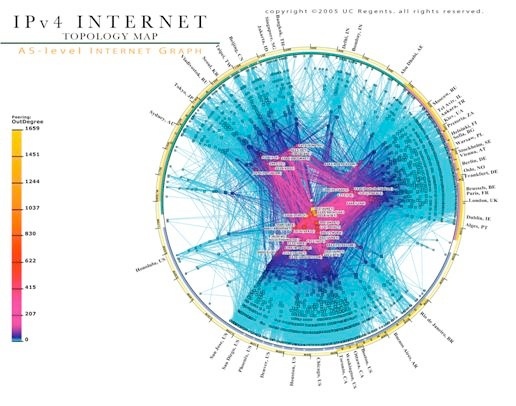Data Networks I

Syllabus:
This class focuses on the key principles that make the Internet scalable, flexible, and extensible. We will focus on these ideas rather than on implementation details and are roughly as follows: the Internet transmits data as packets; the addressing is geographically based; the routing is hierarchical and roughly shortest path; the protocols are arranged in layers; the transport layer supervises the transmissions end to end; the directory service DNS finds the addresses; peer-to-peer makes every user into a server; quality of service could be improved by simple schemes; finally, Wi-Fi devices use a clever scheme to share a common radio channel. We will also look at some practical questions aimed at showing how networking affects our every day life and talk about how the new emerging new field of network science is shaping the electrical engineering curriculum.
Prerequisites: ECE109, ECE159A recommended.
Books:
Lectures will draw material from the following books. We do not strictly follow one, so you will have to be up to date with what is discussed in class. Additional reading material will be posted on-line.
-
•Computer Networking, a top down approach. 6th Edition, by Kurose and Ross. Addison Wesley.
This is a classic book widely used in many Universities across the Country. It describes each layer of the Internet in detail. It serves as a very good reference. It is 860 pages long though. If you are “old school” (in a good sense) this will be an excellent reading.
-
•Communication Networks, a Concise Introduction. By Jean Walrand and Shyam Parekh. Morgan & Claypool Publishers.
This is at the opposite end of the spectrum and is what they use up at Berkeley. The authors say that in one semester it is not possible to cover an 800-page book, so they came up with these notes that focus on key principles. The book is written in a lecture notes style and can be used as a condensed guideline for what is discussed in class. It is just 150 pages long, so you won’t find detailed explanations there. There also are some occasional misprints here and there. The good news though is that is free and is available for download from any campus associated IP address. You can download the PDF from here. If you like a terse account of the basics and are willing to explore more by yourself, this will be an excellent starting point.
-
•Networked life: 20 questions and answers. By Mung Chiang. Cambridge University Press.
This is a cool book with 20 Chapters answering 20 questions on how networks work and giving a modern and entertaining view of the topic. It has been incredibly popular as an on-line course and at Princeton. If you are the curious type and do not like too much structure this is a good and highly enjoyable reading. It does NOT cover all material though.
Class times and location (Fall 2019): Tu-Th 5:00-6:20p WLH 2208
Midterm: Thurs Nov 7
Final: 12/13/2019 (Friday) 7:00p - 9:59p Location: WLH 2112
TA Office hours: Tu-Th 2-3pm Jacobos Hall 5101D
Prof. Franceschetti Office Hours: ATK4302 Immediately after class or Tues 2:30pm or by appointment
Class Organization and Grading:
There will be one Midterm and one Final plus homework assignments including a practical programming project.
Class grade is: 25% Homeworks, 30% Midterm 45% final.
Homework Policy: you need to hand in a copy of your HW on the due date and keep a copy for yourself to check your answers. Solutions are posted immediately after HW is due and HW are not graded. If you do this for all homeworks, you will earn 10% marks. No partial credit will be given. If you skip one homework you will earn 0%. For the project, you need to follow the instruction given on the project sheet to earn the remaining 15%.
ECE-158-Massimo
